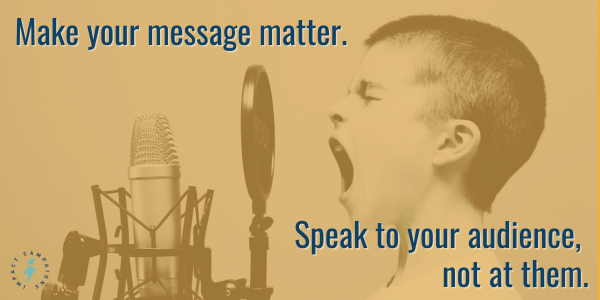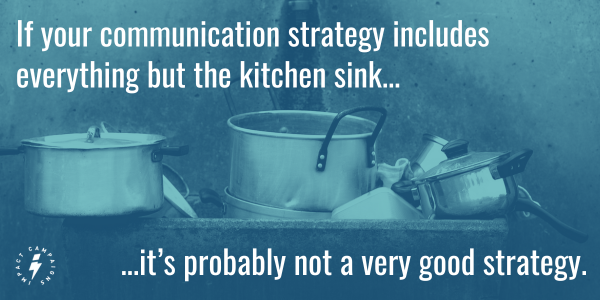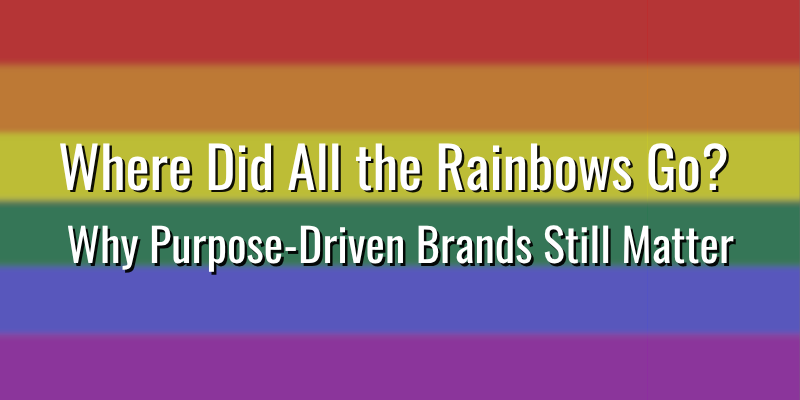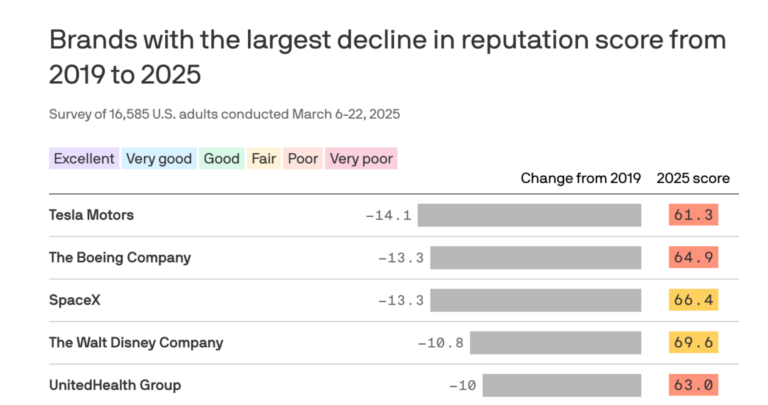5 Tips for Better Communications Strategy

Key Takeaways:
- Communications strategy should be results-oriented and measurable.
- Too many strategic objectives mean you don’t have a plan–you have a wishlist.
- Know your audience and communicate with them, not at them.
With end-of-the-year planning coming up for many organizations, we’ve been thinking a lot about strategy–marketing strategy, political strategy, communications strategy…all of the strategies!
Over the years, we’ve learned a bit about what makes people, organizations, and communities tick and the strategies that work for them (or don’t).
We’ve seen organizations who think they have a strategy, but it’s really just a list of things they repeat over and over. Then they wonder why they don’t get better results.
If you’re thinking about building your marketing, business, or community strategy for the next year, or just want to start being strategic with your communications, here are a few things to remember.
1) Start with results.
As Steven Covey wisely said: “Start with the end in mind.” Smart communications strategy starts with your business goals and works backward from there to the objectives that drive those results.
A successful and measurable strategy requires understanding what success means to your cause or company. Our background in political campaigns makes this an intrinsic part of how we work with clients. In the political world, the result is simple and measurable: win more votes than the opposition.

For most companies, success means more customers, clients, revenue, or profit. Nonprofit organizations seek increased donations, improved outcomes or results for their mission, more people served, or improved quality of life.
We see too many organizations adopting communications strategies with no connection to measurable, bottom-line results. They spend tens of thousands of dollars on communications or marketing outputs that aren’t measurable and may not even support the organization’s growth.
Rebranding efforts, publicity campaigns, new products or services, or mergers and acquisitions can be important parts of a marketing or business strategy. But if those outputs don’t have a clear connection to your organization’s bottom line, you need to ask yourself if it’s part of a real strategy or just an investment.
2) Know who you’re trying to persuade.
There are tons of good strategic planning tools out there, but when it comes to actually explaining and implementing a strategic objective, we believe in the How-Who-What approach.
Simply put, most strategic priorities are based on how your organization persuades who in your market to take what course of action.

If you can’t identify the “who” in this framework, then you’re building a strategy to nowhere.
Understanding your audience—who they are, where to find them, what motivates them, and how to create a connection with them is foundational to a successful communications strategy. Internal stakeholders have different motivations and expectations than external customers. For example, donors to a research foundation have different reasons for investing than donors to a political cause.
In today’s crowded market, where consumers are bombarded with thousands of brand and marketing messages daily, you simply cannot afford to communicate with everyone. Narrowing down your audience to those people, businesses, or institutions most important to your organization to your organization is the key to a successful and cost-effective strategy.
3) Avoid the “Kitchen Sink” approach.
Michael Porter, the Harvard Business School author and management guru, says, “The essence of strategy is choosing what not to do.”

One of the biggest communications strategy mistakes we see is when your strategic plan includes everything but the kitchen sink. Agencies and consulting firms are notorious for this, primarily because they see dollars on implementing the plan. (More stuff to implement means more opportunity to bill the client, right?)
Unfortunately, this is one of the worst uses of your organization’s resources, and it’s a terrible strategy.
An early political mentor of mine was the late Giles Perkins. He often reminded me that good political campaigns focus on doing two or three things really well, and they don’t worry about the rest. That advice still rings true all these years later, and I wish more organizations and agencies would have learned this same lesson.
A good business, marketing, or advocacy strategy doesn’t need more than a handful of objectives or priorities. It’s not easy to drill down to the three, four, or five things that are most important for your organization’s success—in fact, it can be downright grueling. But that’s the difference between a real strategy and a combination of random goals and policies.

If your strategic plan has more than 10 or 15 objectives (like some we’ve seen), it’s not a plan—it’s a wishlist!
4) Meet your audience where they are.
Once you’ve identified your goals, narrowed down your target audience, and determined the best messaging, it’s time to develop the actual communications plan for your audience.
It’s tempting to try and support your communications strategy with the flashy new tactics used by the latest social media influencer or that the headline-grabbing executive owns. However, depending on your audience, that may not be the best approach and could doom your efforts from the start.

Effective marketing and communications are audience-specific and channel-agnostic. This means eliminating preconceived notions about communicating with or reaching your audience. Instead, if you’ve done the work to understand your audience, your communications outreach should be simple: meet your audience where they already are.
Where does your audience get their information?
Do they rely on traditional news sources such as television, newspapers, and online media outlets? Or do they depend more on word-of-mouth, organizational information sources, such as churches, civic groups, or even social media? Are there specific geographic or demographic markers that are communication or information “nodes” for your audience?
These questions can help guide you in meeting your audience where they are.
5) Evaluate and adjust your strategy.
Legendary boxer Mike Tyson once said, “Everybody has a plan until they get punched in the mouth.”
It’s important to recognize that your strategy can and should be evaluated and should change, just as your community, industry, or regulatory environment changes. If your plan isn’t working, or something has changed dramatically in your market or industry, don’t be afraid to course-correct.

However, changes in strategy should not be based on a knee-jerk reaction to market blips or your competitors’ activities. Strategic changes should be carefully thought out and evaluated based on the data or metrics you’ve already identified. Solid metrics and measurable objectives allow you to measure your progress along the way. They also point the way to the changes you need to make.
If you have a clear, measurable strategy with a limited number of objectives, the data will tell you if your plan needs adjusting and what needs to change to succeed.
Ready to build your communications strategy?
Remember these tips as you develop your marketing or communications strategy for the next quarter, year, or business cycle. Make your strategy measurable, limit your plan to the things that matter, know who you need to persuade, and don’t be afraid to adjust.
We’ve used this approach to help local governments, commercial developers, nonprofit organizations, advocacy causes, and political campaigns around the country and the world.
Our communications strategies have protected critical waterways, improved civic and community engagement, supported urban revitalization projects, and opposed environmentally dangerous industries in sensitive neighborhood and cultural areas.
If you’re ready to take your marketing and communications to the next level with a real strategy that delivers results, we can help. Contact us to learn more or schedule a free consultation.





